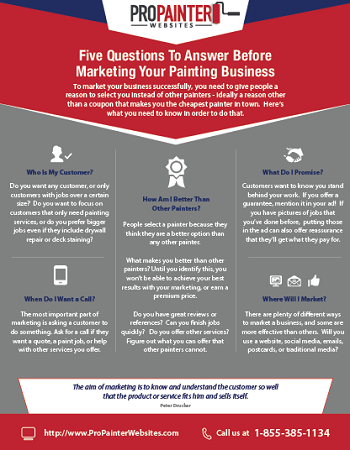Elements To Consider For Industrial Outside Painting By Period: Necessary Information You Need To Have
Elements To Consider For Industrial Outside Painting By Period: Necessary Information You Need To Have
Blog Article
Web Content By-Carlson Celik
When you're preparing a business external painting task, seasonal elements can make or break your outcomes. You'll want to think about exactly how temperature level and humidity effect paint application and drying times. Selecting why not check here can guarantee your paint adheres correctly and lasts longer. However which periods are truly the best for this kind of work? Let's check out the crucial elements that can influence your job's success.
The Effect of Temperature Level on Paint Application
When you're planning a commercial exterior painting task, the temperature level can significantly affect how well the paint sticks and dries.
Preferably, you want to repaint when temperatures range between 50 ° F and 85 ° F. If it's too cold, the paint may not cure properly, leading to problems like peeling or splitting.
On the flip side, if it's too hot, the paint can dry also promptly, avoiding proper attachment and causing an uneven finish.
You should also consider the time of day; morning or late afternoon offers cooler temperatures, which can be more positive.
Constantly check the manufacturer's recommendations for the specific paint you're utilizing, as they frequently give advice on the suitable temperature level variety for optimum results.
Moisture and Its Impact on Drying Times
Temperature isn't the only ecological element that influences your industrial exterior paint project; humidity plays a significant function too. High humidity levels can reduce drying out times considerably, influencing the overall quality of your paint work.
When the air is saturated with wetness, the paint takes longer to heal, which can cause issues like poor bond and a higher danger of mildew development. If you're repainting on a specifically damp day, be gotten ready for extensive wait times between coats.
It's critical to keep track of regional weather and strategy appropriately. Ideally, go for humidity levels in between 40% and 70% for optimum drying out.
Keeping these factors in mind guarantees your task stays on track and provides an enduring surface.
Best Seasons for Commercial Exterior Paint Projects
What's the best time of year for your industrial outside paint projects?
Spring and very early fall are normally your best options. During these seasons, temperatures are mild, and moisture levels are typically reduced, producing excellent conditions for paint application and drying.
Prevent summertime's intense heat, which can create paint to dry as well rapidly, resulting in inadequate adhesion and finish. Likewise, winter months's chilly temperature levels can hinder appropriate drying and treating, risking the longevity of your paint task.
Go for days with temperatures between 50 ° F and 85 ° F for ideal outcomes. Bear in mind to check the regional weather forecast for rain, as damp problems can wreck your job.
Planning around stucco painting company plymouth ensures your paint job runs efficiently and lasts longer.
Conclusion
To conclude, preparing your commercial external paint jobs around seasonal factors to consider can make a substantial distinction in the end result. By scheduling work during the optimal temperatures and moisture levels, you'll make sure far better adhesion and drying out times. Remember to watch on regional weather prediction and choose the right time of year-- spring and very early loss are your best bets. Taking these actions will aid you attain a resilient and professional finish that lasts.
